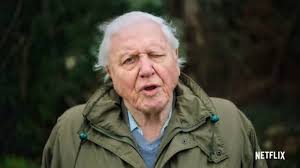Peterborough Examiner – June 4, 2021 – by Drew Monkman
City’s actions don’t reflect declaration of a Climate Emergency
On these beautiful June days, it’s hard to imagine the planet is in the midst of a climate crisis. And, even if we accept the science, isn’t the pandemic a much bigger issue? The reality, of course, is that the climate crisis is orders of magnitude more serious than what Covid-19 has wrought upon us. What makes this crisis different from all others is that we are up against a firm deadline – one dictated by physics and chemistry. If we don’t bring greenhouse gas emissions to net zero by 2050 – which requires a 45% reduction by 2030 – the planetary systems that assure a stable climate (e.g., summer Arctic Sea ice) will continue to collapse and trigger runaway, catastrophic change. Everything we do that produces emissions, be it transportation, agriculture, buildings, manufacturing, or electricity generation – must therefore change radically. To understand how perilously close we are to runaway climate catastrophe, watch “Breaking Boundaries” which comes out today on Netflix.
Change must happen at all scales, but most importantly with corporations and governments. Local governments play a critical role, in this regard. In fact, they are the climate action leaders in many parts of the world. Why can’t this be the case in Peterborough?
Despite strong commitments to do things differently, much of what’s happening at city hall reinforces the perception that we can pretty much carry on with business as usual. Let’s remember, however, that the city is a partner in the Greater Peterborough Area Climate Action Plan which includes a commitment to reducing our greenhouse gas emissions by 30 percent over 2011 levels by 2031. This includes emissions generated by municipal operations (five percent of total) and by the community as a whole (95%).
In September 2019, city council also declared a climate emergency, expressing support to incorporate a “climate change lens” into all city actions and policies. The declaration also expressed the need to achieve a 45% emission reduction by 2030 and reach net zero emissions by 2050, in agreement with the UN requirement. If this goal is to be taken seriously, it means the city would have to reduce emissions by about six percent per year over the next eight-and-a-half years. It therefore follows that all city actions and policies need to reflect this.
This is not happening. The latest case in point is a staff report that came to council last week recommending the purchase of a $400,000 radiant heating system for the new urban park on Charlotte Street. It will pump heated antifreeze through pipes embedded under the park’s concrete surfaces in order to keep them snow and ice-free. The problem is that the heat will come from an emission-spewing natural gas-fired boiler. Where was the climate lens on this recommendation, and why would staff ambush council with it at the last minute?
This is not the only example. In April, a draft of the city’s new Transportation Master Plan was presented to council. It is designed to guide every aspect of getting around Peterborough for the next 20 years. Transportation is responsible for about 30% of Peterborough’s emissions. However, the draft report made no reference to the climate emergency at all. This is outrageous. It was only because of a suggestion by Councillor Akapo that the proposed mission statement and objectives of the plan were reworded to strongly emphasize climate mitigation and recognize we’re in a climate emergency.
Leadership
On city council, the most consistent advocates for the environment and for operating within a climate lens have been Councillors Kemi Akapo, Henry Clarke, Dean Pappas, and Kim Zippel. Why Mayor Diane Therrien doesn’t show stronger climate leadership remains a mystery, especially given her personal commitment to reducing emissions. The absence of climate leadership on her part makes it more difficult for councillors to act.
As for city staff, the picture is also complicated. Many city employees are clearly strong proponents for action on climate. However, the absence of a clear climate lens in recent staff reports indicates a roadblock with the Commissioner of Planning and Infrastructure, Cynthia Fletcher. If this obstruction to be broken, it’s incumbent upon Chief Administrative Officer, Sandra Clancy, to take responsibility and insist that climate implications are considered in all decision-making.
Kudos
The failure to apply a climate lens to decision-making is unfortunate. It sends the message that we aren’t in fact in a climate emergency. This, in turn, creates skepticism around the declaration itself and disincentivizes action on the part of other community players. This is regrettable because the city has actually made some noteworthy progress on the climate front.
The 2020 city budget was the first ever to highlight climate change mitigation and adaptation measures throughout the document. The city has also hired a full-time Climate Change Coordinator, created an environmental advisory committee, and put $426,400 into a Climate Change Action Plan Reserve Fund. There has been considerable progress in adaptation measures to increase community resilience in the face of severe, climate change-related wind and rain events. Number one among these has been the work on improving storm and sanitary sewers. On the mitigation front, we can cite examples like new biking infrastructure, a smart signal system to optimize traffic flows and reduce idling time, the new tree bylaw and on-going tree planting, LED city lights, applying to the Federation of Canadian Municipalities for funding to develop a residential home energy efficiency program, and the coming Source Separated Organics program to address methane emissions.
Moving forward
There are many other things the city could be doing, not all of which require big spending.
1. Ensure that a serious climate lens is indeed being applied to all city projects and decisions with significant climate implications. There must also be sufficient time for councillors to have their questions answered by staff.
2. Mail out and post online an urgent Climate Change Advisory, similar to the Covid-19 Advisory of March 2020.
3. Improve the Transportation Master Plan by reexamining the feasibility of on-demand buses and committing to purchase electric city vehicles such as pickup trucks. The city should also develop a long-term plan for electrifying the bus fleet. Enough Canadian cities have now purchased electric buses for Peterborough to make informed decisions.
4. Show local residents exactly how the city plans to reduce emissions by 6% a year from now through 2031.
5. Communicate climate adaptation and mitigation successes, on-going challenges, and future plans much more widely. This should include the percentage by which the city reduced its emissions in 2020 and what the reduction will be for 2021.
6. Post more “no idling” signs, enforce the bylaw, and report on the effectiveness of the new traffic cameras to reduce idling time at stop lights.
7. Now that the federal government has released its plans for grant money for home retrofits, advertise widely how these can be done. Let’s remember that 37% of carbon emissions come from buildings. For information, go to https://tinyurl.com/6r7px8cy
8. Given that lawn maintenance has a huge carbon cost, the city should greatly reduce the area of municipal lawn being cut and rewild much of that with native plants.
The City of Peterborough needs to lead by example. If citizens and businesses are to take the climate crisis more seriously and vote with climate front of mind, it’s essential that they see examples of municipal best practices every time they step out the door.

Climate Crisis News
In what may be the most important documentary of all time, “Breaking Boundaries” explains how the 2020s is the make it or break it decade for a livable planet. Available starting today on Netflix, the documentary takes us on a journey of discovery of planetary thresholds or boundaries we must not exceed. Breaking enough of these boundaries will trigger non-linear, abrupt change to the planet-scale systems on which a stable climate and civilization itself depend. Boundaries that are already beyond the point of repair are tropical coral reefs, summer Arctic Sea ice, and the West Antarctic ice sheets. I recommend watching this with a young person. Everyone has to know the facts. Yes, they’re frightening, but facts are what trigger the necessary scale of public outrage and activism to bring about radical change. Just like they did when we saw with our very eyes what happened to George Floyd. There can be no more turning our eyes away from the dire climate calamity we’re facing. See the trailer at https://tinyurl.com/5ybuenvu
To see a list of ways YOU can take climate action, go to https://forourgrandchildren.ca/ and click on “This Month’s Action” or “Find Another Action You Can Take Today”.



